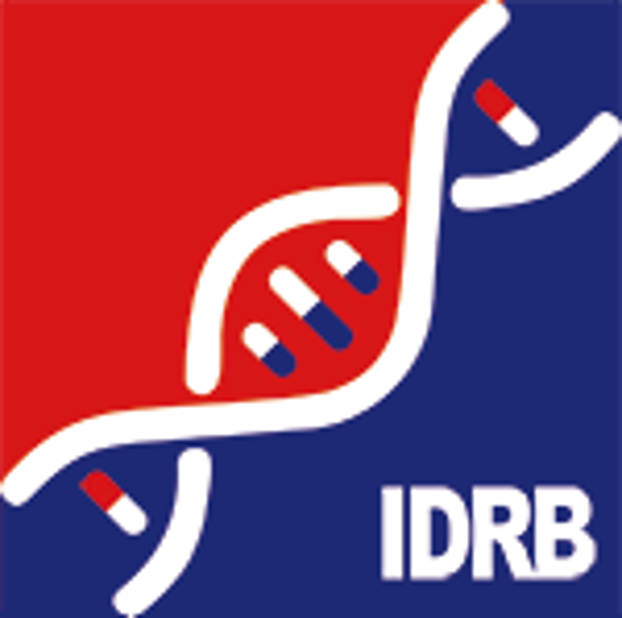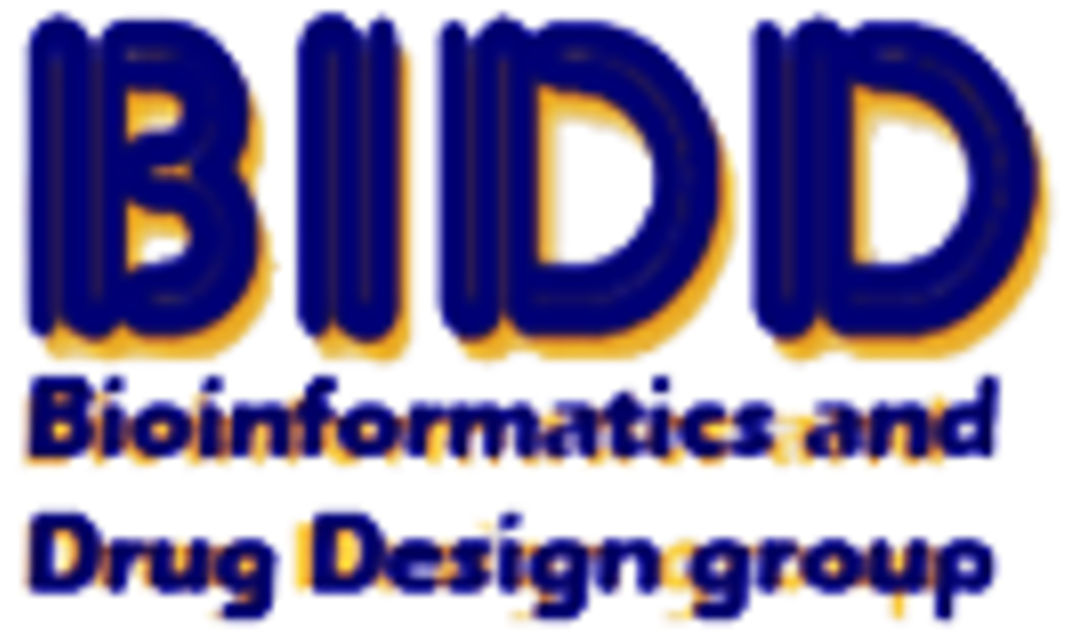Target Information
| Target General Information | Top | |||||
|---|---|---|---|---|---|---|
| Target ID |
T88415
(Former ID: TTDR01149)
|
|||||
| Target Name |
Receptor-type protein-tyrosine phosphatase zeta (PTPRZ1)
|
|||||
| Synonyms |
Receptor protein tyrosine phosphatase zeta; R-PTP-zeta; PTPRZ1
Click to Show/Hide
|
|||||
| Gene Name |
PTPRZ1
|
|||||
| Target Type |
Literature-reported target
|
[1] | ||||
| Function |
Protein tyrosine phosphatase that negatively regulates oligodendrocyte precursor proliferation in the embryonic spinal cord. Required for normal differentiation of the precursor cells into mature, fully myelinating oligodendrocytes. May play a role in protecting oligondendrocytes against apoptosis. May play a role in the establishment of contextual memory, probably via the dephosphorylation of proteins that are part of important signaling cascades.
Click to Show/Hide
|
|||||
| BioChemical Class |
Phosphoric monoester hydrolase
|
|||||
| UniProt ID | ||||||
| EC Number |
EC 3.1.3.48
|
|||||
| Sequence |
MRILKRFLACIQLLCVCRLDWANGYYRQQRKLVEEIGWSYTGALNQKNWGKKYPTCNSPK
QSPINIDEDLTQVNVNLKKLKFQGWDKTSLENTFIHNTGKTVEINLTNDYRVSGGVSEMV FKASKITFHWGKCNMSSDGSEHSLEGQKFPLEMQIYCFDADRFSSFEEAVKGKGKLRALS ILFEVGTEENLDFKAIIDGVESVSRFGKQAALDPFILLNLLPNSTDKYYIYNGSLTSPPC TDTVDWIVFKDTVSISESQLAVFCEVLTMQQSGYVMLMDYLQNNFREQQYKFSRQVFSSY TGKEEIHEAVCSSEPENVQADPENYTSLLVTWERPRVVYDTMIEKFAVLYQQLDGEDQTK HEFLTDGYQDLGAILNNLLPNMSYVLQIVAICTNGLYGKYSDQLIVDMPTDNPELDLFPE LIGTEEIIKEEEEGKDIEEGAIVNPGRDSATNQIRKKEPQISTTTHYNRIGTKYNEAKTN RSPTRGSEFSGKGDVPNTSLNSTSQPVTKLATEKDISLTSQTVTELPPHTVEGTSASLND GSKTVLRSPHMNLSGTAESLNTVSITEYEEESLLTSFKLDTGAEDSSGSSPATSAIPFIS ENISQGYIFSSENPETITYDVLIPESARNASEDSTSSGSEESLKDPSMEGNVWFPSSTDI TAQPDVGSGRESFLQTNYTEIRVDESEKTTKSFSAGPVMSQGPSVTDLEMPHYSTFAYFP TEVTPHAFTPSSRQQDLVSTVNVVYSQTTQPVYNGETPLQPSYSSEVFPLVTPLLLDNQI LNTTPAASSSDSALHATPVFPSVDVSFESILSSYDGAPLLPFSSASFSSELFRHLHTVSQ ILPQVTSATESDKVPLHASLPVAGGDLLLEPSLAQYSDVLSTTHAASETLEFGSESGVLY KTLMFSQVEPPSSDAMMHARSSGPEPSYALSDNEGSQHIFTVSYSSAIPVHDSVGVTYQG SLFSGPSHIPIPKSSLITPTASLLQPTHALSGDGEWSGASSDSEFLLPDTDGLTALNISS PVSVAEFTYTTSVFGDDNKALSKSEIIYGNETELQIPSFNEMVYPSESTVMPNMYDNVNK LNASLQETSVSISSTKGMFPGSLAHTTTKVFDHEISQVPENNFSVQPTHTVSQASGDTSL KPVLSANSEPASSDPASSEMLSPSTQLLFYETSASFSTEVLLQPSFQASDVDTLLKTVLP AVPSDPILVETPKVDKISSTMLHLIVSNSASSENMLHSTSVPVFDVSPTSHMHSASLQGL TISYASEKYEPVLLKSESSHQVVPSLYSNDELFQTANLEINQAHPPKGRHVFATPVLSID EPLNTLINKLIHSDEILTSTKSSVTGKVFAGIPTVASDTFVSTDHSVPIGNGHVAITAVS PHRDGSVTSTKLLFPSKATSELSHSAKSDAGLVGGGEDGDTDDDGDDDDDDRGSDGLSIH KCMSCSSYRESQEKVMNDSDTHENSLMDQNNPISYSLSENSEEDNRVTSVSSDSQTGMDR SPGKSPSANGLSQKHNDGKEENDIQTGSALLPLSPESKAWAVLTSDEESGSGQGTSDSLN ENETSTDFSFADTNEKDADGILAAGDSEITPGFPQSPTSSVTSENSEVFHVSEAEASNSS HESRIGLAEGLESEKKAVIPLVIVSALTFICLVVLVGILIYWRKCFQTAHFYLEDSTSPR VISTPPTPIFPISDDVGAIPIKHFPKHVADLHASSGFTEEFETLKEFYQEVQSCTVDLGI TADSSNHPDNKHKNRYINIVAYDHSRVKLAQLAEKDGKLTDYINANYVDGYNRPKAYIAA QGPLKSTAEDFWRMIWEHNVEVIVMITNLVEKGRRKCDQYWPADGSEEYGNFLVTQKSVQ VLAYYTVRNFTLRNTKIKKGSQKGRPSGRVVTQYHYTQWPDMGVPEYSLPVLTFVRKAAY AKRHAVGPVVVHCSAGVGRTGTYIVLDSMLQQIQHEGTVNIFGFLKHIRSQRNYLVQTEE QYVFIHDTLVEAILSKETEVLDSHIHAYVNALLIPGPAGKTKLEKQFQLLSQSNIQQSDY SAALKQCNREKNRTSSIIPVERSRVGISSLSGEGTDYINASYIMGYYQSNEFIITQHPLL HTIKDFWRMIWDHNAQLVVMIPDGQNMAEDEFVYWPNKDEPINCESFKVTLMAEEHKCLS NEEKLIIQDFILEATQDDYVLEVRHFQCPKWPNPDSPISKTFELISVIKEEAANRDGPMI VHDEHGGVTAGTFCALTTLMHQLEKENSVDVYQVAKMINLMRPGVFADIEQYQFLYKVIL SLVSTRQEENPSTSLDSNGAALPDGNIAESLESLV Click to Show/Hide
|
|||||
| 3D Structure | Click to Show 3D Structure of This Target | AlphaFold | ||||
| Cell-based Target Expression Variations | Top | |||||
|---|---|---|---|---|---|---|
| Cell-based Target Expression Variations | ||||||
| Drug Binding Sites of Target | Top | |||||
|---|---|---|---|---|---|---|
| Ligand Name: 3-{[2-Ethoxy-5-(Trifluoromethyl)benzyl]sulfanyl}-N-(Phenylsulfonyl)thiophene-2-Carboxamide | Ligand Info | |||||
| Structure Description | Human PTPRZ D1 domain complexed with NAZ2329 | PDB:5H08 | ||||
| Method | X-ray diffraction | Resolution | 2.53 Å | Mutation | No | [2] |
| PDB Sequence |
GPAIPIKHFP
1705 KHVADLHASS1715 GFTEEFEEVQ1732 SCTVDLGITA1742 DSSNHPDNKH1752 KNRYINIVAY 1762 DHSRVKLAQL1772 AEKDGKLTDY1782 INANYVDGYN1792 RPKAYIAAQG1802 PLKSTAEDFW 1812 RMIWEHNVEV1822 IVMITNLVEK1832 GRRKCDQYWP1842 ADGSEEYGNF1852 LVTQKSVQVL 1862 AYYTVRNFTL1872 RNTKIRVVTQ1893 YHYTQWPDMG1903 VPEYSLPVLT1913 FVRKAAYAKR 1923 HAVGPVVVHC1933 SAGVGRTGTY1943 IVLDSMLQQI1953 QHEGTVNIFG1963 FLKHIRSQRN 1973 YLVQTEEQYV1983 FIHDTLVEAI1993 LS
|
|||||
|
|
ILE1826
3.610
GLU1831
4.970
TYR1896
3.697
GLN1898
3.589
TRP1899
3.294
PRO1900
4.583
VAL1904
4.600
PRO1905
3.322
GLU1906
4.131
VAL1911
3.807
PHE1914
4.201
|
|||||
| Click to View More Binding Site Information of This Target with Different Ligands | ||||||
| Different Human System Profiles of Target | Top |
|---|---|
|
Human Similarity Proteins
of target is determined by comparing the sequence similarity of all human proteins with the target based on BLAST. The similarity proteins for a target are defined as the proteins with E-value < 0.005 and outside the protein families of the target.
A target that has fewer human similarity proteins outside its family is commonly regarded to possess a greater capacity to avoid undesired interactions and thus increase the possibility of finding successful drugs
(Brief Bioinform, 21: 649-662, 2020).
Human Tissue Distribution
of target is determined from a proteomics study that quantified more than 12,000 genes across 32 normal human tissues. Tissue Specificity (TS) score was used to define the enrichment of target across tissues.
The distribution of targets among different tissues or organs need to be taken into consideration when assessing the target druggability, as it is generally accepted that the wider the target distribution, the greater the concern over potential adverse effects
(Nat Rev Drug Discov, 20: 64-81, 2021).
Biological Network Descriptors
of target is determined based on a human protein-protein interactions (PPI) network consisting of 9,309 proteins and 52,713 PPIs, which were with a high confidence score of ≥ 0.95 collected from STRING database.
The network properties of targets based on protein-protein interactions (PPIs) have been widely adopted for the assessment of target’s druggability. Proteins with high node degree tend to have a high impact on network function through multiple interactions, while proteins with high betweenness centrality are regarded to be central for communication in interaction networks and regulate the flow of signaling information
(Front Pharmacol, 9, 1245, 2018;
Curr Opin Struct Biol. 44:134-142, 2017).
Human Similarity Proteins
Human Tissue Distribution
Biological Network Descriptors
|
|
|
There is no similarity protein (E value < 0.005) for this target
|
|
Note:
If a protein has TS (tissue specficity) scores at least in one tissue >= 2.5, this protein is called tissue-enriched (including tissue-enriched-but-not-specific and tissue-specific). In the plots, the vertical lines are at thresholds 2.5 and 4.
|
| Degree | 5 | Degree centrality | 5.37E-04 | Betweenness centrality | 5.50E-05 |
|---|---|---|---|---|---|
| Closeness centrality | 2.02E-01 | Radiality | 1.35E+01 | Clustering coefficient | 0.00E+00 |
| Neighborhood connectivity | 1.08E+01 | Topological coefficient | 2.04E-01 | Eccentricity | 12 |
| Download | Click to Download the Full PPI Network of This Target | ||||
| Chemical Structure based Activity Landscape of Target | Top |
|---|---|
| Target Poor or Non Binders | Top | |||||
|---|---|---|---|---|---|---|
| Target Poor or Non Binders | ||||||
| References | Top | |||||
|---|---|---|---|---|---|---|
| REF 1 | Receptor protein tyrosine phosphatase zeta as a therapeutic target for glioblastoma therapy. Expert Opin Ther Targets. 2004 Jun;8(3):211-20. | |||||
| REF 2 | Targeting PTPRZ inhibits stem cell-like properties and tumorigenicity in glioblastoma cells. Sci Rep. 2017 Jul 17;7(1):5609. | |||||
If You Find Any Error in Data or Bug in Web Service, Please Kindly Report It to Dr. Zhou and Dr. Zhang.

